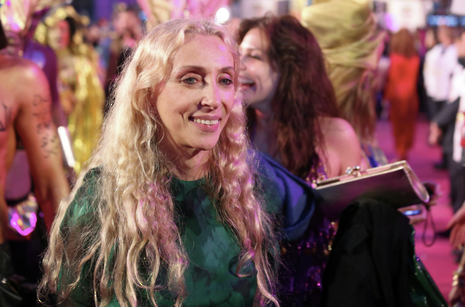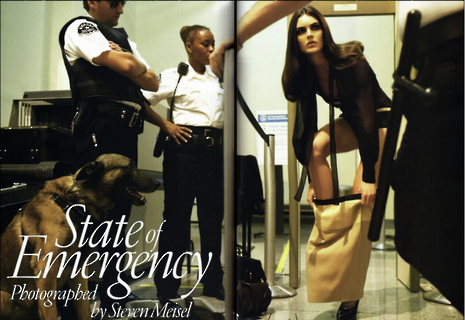Arrivederci, Franca Sozzani
The fashion world bids a sad farewell to Franca Sozzani, Editor of Vogue Italia for 28 years

Franca Sozzani, the Editor of Vogue Italia, died on 22nd December 2016 at the age of 66, after battling a year-long disease. She was not only an editor, but also a diligent mentor, an activist, an inspiration and an icon. While her death represents one of the most significant losses to fashion of this century, the legacy she left behind has paved the way for a new, refreshingly optimistic approach to fashion in a world that seems riddled with ever-more tragedy.
Sozzani was consistently one step ahead of the industry, often acting as the gatekeeper to usher in some of the most defiant trends of the time. In the 1990s, she helped create the phenomenon of the supermodel with her long-term collaborator and famed photographer, Steven Meisel, which gave rise to titans such as Naomi Campbell, Linda Evangelista, Cindy Crawford and Christy Turlington.
In July 2005 for Vogue Italia, she and Meisel tackled the unprecedented boom of plastic surgery. This editorial was particularly controversial, showing the supermodel Linda Evangelista being poked and prodded, stitched and sliced in order to retain and enhance her naturally endowed beauty. Sozzani revelled in playing devil’s advocate against the industry in which she made her career, by pointing out that the ideals represented by fashion and beauty media were not altogether wholesome or naturally attainable, but required painful, even dangerous procedures, even for the most beautiful women in the world.

She took the helm of Vogue Italia in 2008, since when she has steered the magazine from strength to strength, making it one of the most influential voices across the national franchises of the Fashion Bible. Not only did she oversee the cultivation of one magazine, she began to create new branches of Vogue Italia to enrich the experience the publication offered to its readers, introducing overshoots such as Vogue Bambino (Children’s Vogue) and Vogue Sposa (Bridal Vogue). While 2017 has been named the Year of Beauty Beyond Size by Vogue UK, ever-prescient Sozzani had already launched her Vogue Curvy in 2011, written and curated by plus-size bloggers who offer fashion tips for the full-figured.
In 2012, Sozzani was appointed a United Nations Goodwill Ambassador for Fashion4Development – a global campaign that uses fashion-based initiatives to support the United Nations’ wider issues in helping Africa. And in May that year, as the Editor of L’Uomo Vogue (Men’s Vogue), she dedicated an issue to ‘Rebranding Africa’, which aimed to bring Africa into the media focus for reasons other than conflict, suffering and poverty. The cover star was not a model or fashion icon, but the 67-year-old Secretary-General of the UN, Ban Ki-Moon. Sozzani took the magazine far beyond its sartorial scope, considering the economic potential for the continent to contribute to the billion-dollar global fashion industry.
Her indefatigable commitment to sustainable and ethical development meant that she faced issues which many fashion magazines dare not dirty their hands with, not just racial divides, unobtainable beauty and African poverty, but also domestic violence, drug abuse and rehabilitation, and the Gulf of Mexico oil spill of 2010. She also became a leading figure in the world’s conversations about sustainable fashion, and raised awareness during Milan Fashion Weeks for new designers who utilised ecological production processes.
Franca Sozzani was and will remain a rare figure of integrity in the notoriously superficial fashion world. She was never one to shy away from the dark underbelly of the industry and was ready to dedicate her time and energy to causes she believed in, regardless of how far removed they might have been from the glamour associated with her position. Her description of what fashion should and could be, in an interview with The Telegraph in 2013, has resonated with me ever since:
“Fashion is not only about a piece of fabric. If you think about all the [fashion] movements we have had in the years, they came from a situation that’s social, economical and political. So why should we not reflect our time?”
 News / Clare Hall spent over £500k opposing busway 24 December 2025
News / Clare Hall spent over £500k opposing busway 24 December 2025 Comment / The ‘class’ of Cambridge24 December 2025
Comment / The ‘class’ of Cambridge24 December 2025 News / Caius mourns its tree-mendous loss23 December 2025
News / Caius mourns its tree-mendous loss23 December 2025 Comment / Yes, I’m brown – but I have more important things to say22 December 2025
Comment / Yes, I’m brown – but I have more important things to say22 December 2025 News / Girton JCR publishes open letter expressing solidarity with Palestine25 December 2025
News / Girton JCR publishes open letter expressing solidarity with Palestine25 December 2025









